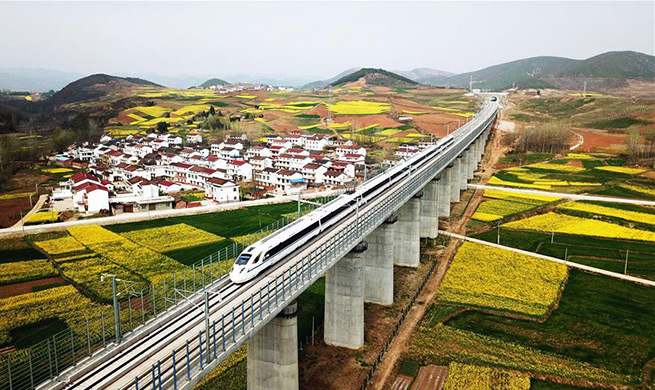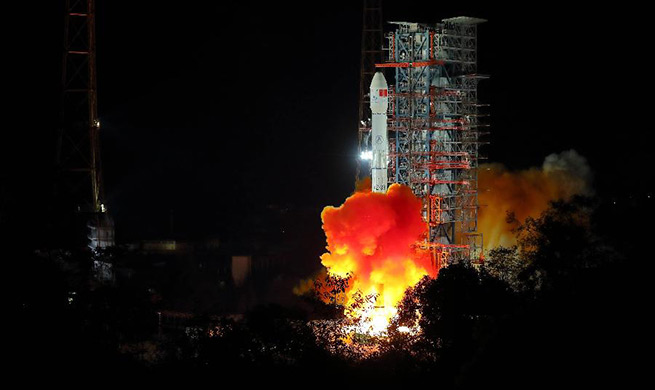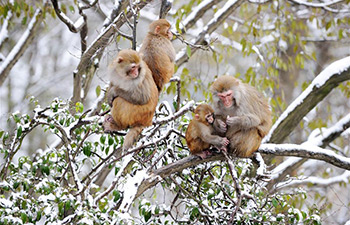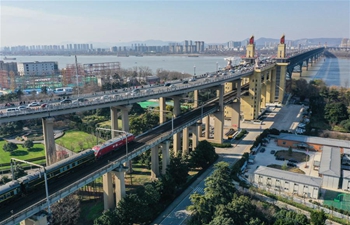KATHMANDU, Dec. 31 (Xinhua) -- The Nepali government has moved to take measures to boost exports and restrict imports as the country is worried about widening trade deficit and the decrease in foreign exchange reserves.
Nepal's Ministry of Industry, Commerce and Supplies on Thursday introduced a new guideline on export incentives offering cash incentives up to 5 percent of the export volume.
The products having at least 50 percent value addition get cash incentives of 5 percent while those having value addition of at least 30 percent get cash incentives of 3 percent. Earlier, the Nepali government used to provide flat 2 percent cash incentives of the export volume.
The remarkable difference in the new guideline is that the Nepali government offers cash intensive for the products which are exported to India. Trade experts had long been suggesting to provide incentives for exporting to India as India is the largest trading partner of Nepal and the country faces the largest trade deficit with the southern neighbor.
Nepal's Finance Ministry last week formed a taskforce headed by its Revenue Secretary to identify the products that are contributing to excessive outflow of foreign currency so that necessary steps could be taken to discourage the imports of non-essential goods.
The ministry officials told Xinhua that the quantitative restriction on certain products is also under consideration after the taskforce submitted its report.
These measures of the Nepali government came after the country faces a deficit of 4.05 billion U.S. dollar as of the first four months of the current fiscal year that began in mid-July, a rise of 37.8 percent compared to the same period last fiscal year, according to Nepal Rastra Bank (NRB), the central bank of the country.
In the last four month of this fiscal year, Nepal imported goods worth 4.31 billion U.S. dollar, leading to a deficit of 503 million U.S. dollars.
NRB data showed Nepal also witnessed a decrease in foreign exchange reserves by 6.5 percent to 9.43 billion U.S. dollar. The Nepali central bank has adopted the policy of maintaining foreign exchange reserves to sustain import for at least eight months, according to NRB officials.
Amid depleting foreign exchange reserve, NRB last month decreased foreign exchange amount for Nepali citizen going to the countries other than India to 1,500 U.S. dollars from the earlier 2,500 U.S. dollars.
The Nepali central bank last week also put cap on withdrawal of deposits up to Indian currency 100,000 through electronic cards in a month to pay for purchasing goods and services in India.
Nepali economist and trade experts say those measures to address depleting foreign exchange reserves show that the Nepali authorities have been worried about the situation. The Nepali government has, however, been arguing that heavy imports of capital goods and industrial raw materials are helping the economy grow.
"So far, the remittance has been the major source for financing of the growing imports. When remittance inflow decreases, the Nepali economy will really be in trouble. We must boost exports and reduce imports," Keshav Acharya, a senior economist told Xinhua on Saturday.
Workers' remittance increased by 23.1 percent to 2.78 billion U.S. dollar in the first four months although the number of migrant workers during the same period decreased by 41 percent, according to NRB.
The decreasing migrant workers may lead to decreased inflow of remittances in the days to come, putting further pressure on foreign exchange reserves, Nepali experts said.
Acharya, who also worked as senior economist advisor at the Nepal's Finance Ministry about a decade ago, suggested to take sterner measures to control imports of private vehicles and agriculture products which Nepal has abundance potential to produce within the country. In the recent years, Nepal has also been heavily dependent on imports for consumption of agriculture goods.
Former Commerce Secretary of the Nepali government Purushottam Ojha told Xinhua on Saturday that Nepali government's decision to provide export incentive targeting boosting export to India is correct.
"In the past, Nepal provided such facility only to the exports to the countries other than India although Nepal's largest outside market is India. So it could make significant difference in boosting exports," he said.
Eight years ago when Nepal implemented its 12th Periodic Plan, the country announced a target of boosting its exports to 1 billion U.S. dollars by the end of the three-year plan in 2013.
As Nepal is preparing the 15th plan to be implemented in the next fiscal year, the country is still struggling to meet this export target. On the other hand, imports continued to grow over the period.
With Nepal also considering quantitative restrictions on certain products to reduce trade deficit, Ojha suggested it is better to keep tariff within the maximum limit set by the World Trade Organization than imposing quantitative restriction.
"Quantitative restriction brings distortion in trade as people seek to import such products through unofficial channel leading to growth of informal economy," he said.












